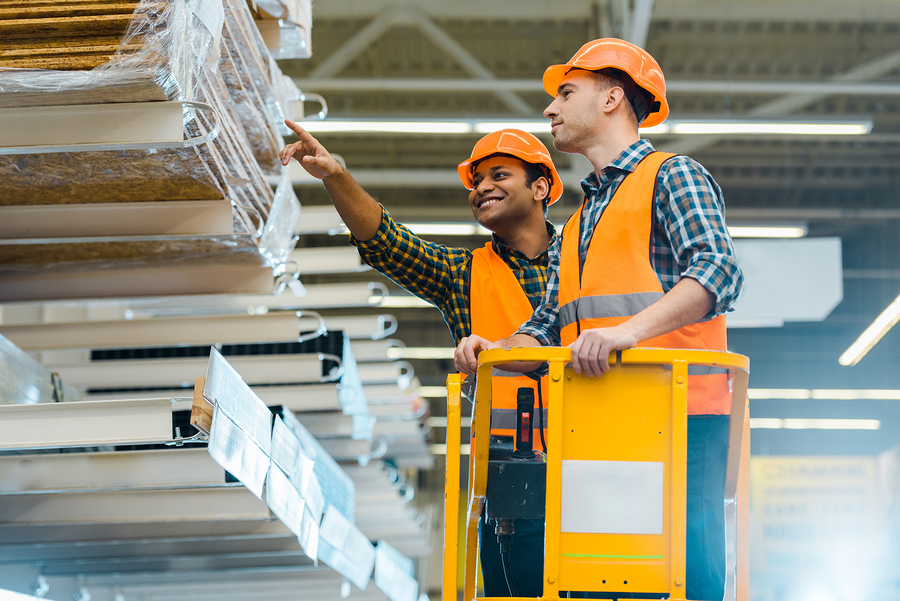As an equipment rental business, we have a lot of regular customers that we’re always happy to see. But we also specialize in helping new teams approach some of the larger equipment. Equipment rental is unique because so many people come through our doors with a project idea, ready to tackle whatever steps and tools might be needed for completion. And sometimes that includes using equipment you have never used before; this often means safety needs to be considered more carefully.
Lifts are one of the most common pieces of equipment rented for one-time extravagant projects, sometimes once-in-a-lifetime experiences for non-business customers. You might need a lift to plan a single event, to enact unique repairs, or to complete a one-time home improvement project. Or your business might be renting a lift for the first time in an operation that will soon become routine.
For all scissor- and aerial-lift first-timers, we’ve put together a few helpful operational safety tips.
1) Trained and Certified Operator
Aerial lifts are “cherry-picker” or bucket lifts that extend a platform on an arm. Scissor lifts are direct up-and-down lifts that extend a lattice to lift a flat platform. If you are a business with employees operating the lifts, your employees will need to be trained and certified according to OSHA standards.
However, private operators should also consider having at least one member of your team certified in lift operation to ensure the safety of your project. You might even consider hiring a lift operator for a day when your lift is in use.
2) Never Override Safety Features or Limits
Lifts have mechanical limits and safe-operation limits. Never override the installed safety features that limit the lift’s extension, speed, and so on. Your lift will also come with instructions regarding the weight limit and extension limits. If you override safety features or ignore safety limitations, there are a number of negative potential consequences.
First, you will likely be breaking your lift rental contract terms, as rental contracts usually include adherence to installed safety features and safe use limitations. Second, you put yourself and your team at risk of injury and increase the likelihood of damaging the lift.
3) Maintenance and Controls Check Before Operating
Always do an all-systems check before operating a lift, especially before operating a lift with platform passengers. Like any vehicle, start by taking a walk all the way around. Inspect for signs of damage or tampering. Kick the tires. Make sure there are no wheel blocks still in place. Then check that all the controls are responsive and operational with no warning lights or signs of malfunction. Finally, operate the lift once empty after each startup before operating it with passengers.
4) Inspect the Area for Potential Hazards
Before you go anywhere with the lift or lift the platform, inspect the are around the lif. Check the surrounding road or pavement, check for tree branches and wires overhead. Stay at least 10 feet away from power lines at all times, assuming you are not the power company who have their own lifts. Any time you move the lift, re-inspect the area before raising the platform.
5) Pay Attention to Surroundings when Operating the Lift
As you raise the lift, stay in contact with your platform occupants. If they say stop, stop immediately or hand over lift controls to the bucket. There is always a chance that an unseen hazard will become a problem and that must be dealt with as soon as it is noticed. Maintain acute awareness and pay attention to surroundings any time you are operating or have passengers in the lift.
6) Always Lock and Stabilize when Stationary
Finally, always lock and stabilize when the lift is stationary. Use outriggers, brakes, and wheel chocks to ensure that your lift and its platform are absolutely stable while your team is working high above the ground. Allow no possibility for the vehicle to roll or for the platform to shake.
—
Our team here at Vandalia Rental will be happy to walk you through lift use and safety protocols when you come to rent a lift from our broad collection of equipment vehicles. We’ll help you pick the right lift for the job, then go over everything you need to know to put that lift to use in your project. Contact us today for more information about lift rental and safety.


